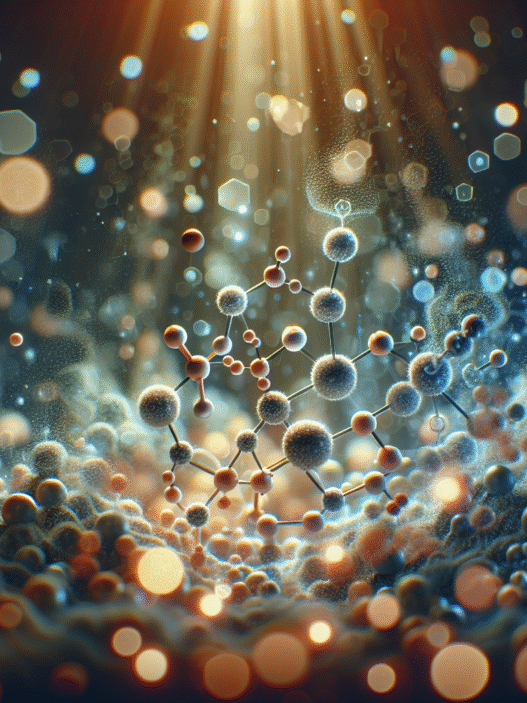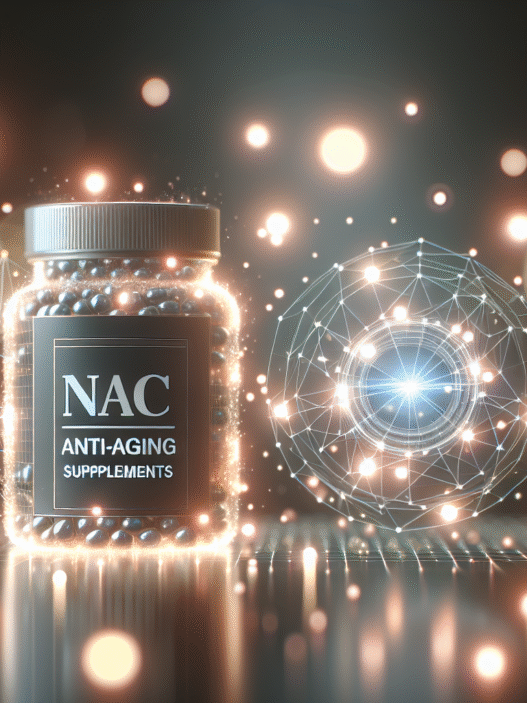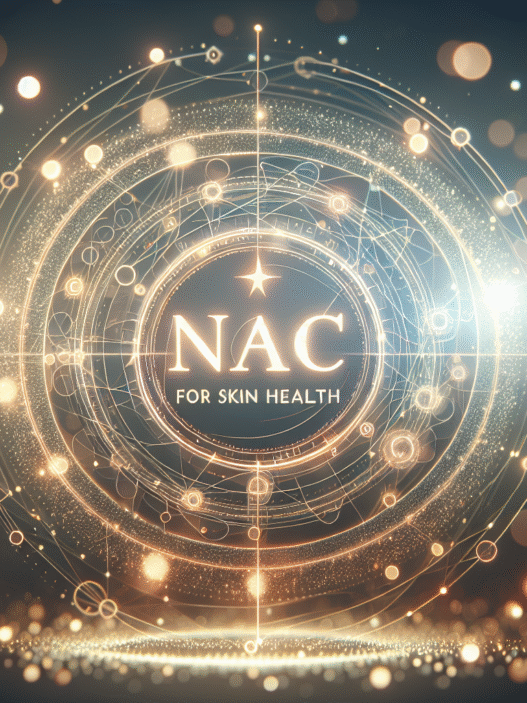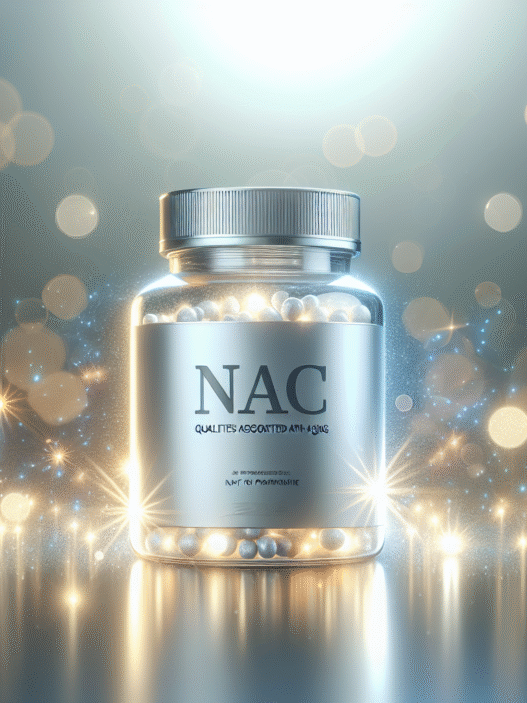Understanding N-Acetyl Cysteine (NAC)
Introduction to NAC
N-acetylcysteine (NAC) is a derivative of the amino acid cysteine and is widely recognized for its health benefits, particularly in the context of n-acetyl cysteine anti-aging research. This compound is approved by the FDA for treating acetaminophen overdose and works as a mucolytic agent to help break down mucus in the lungs. Its established safety profile makes it a popular option for various health applications, including enhancing liver health and detoxification.
NAC plays a crucial role in the body by replenishing levels of glutathione, a powerful antioxidant vital for maintaining cellular health. Research indicates that NAC may offer several benefits, particularly in protecting against oxidative stress and inflammatory conditions.
Mechanisms of Action
The effectiveness of NAC can be attributed to its ability to influence several biological processes. One of its primary mechanisms is the enhancement of intracellular glutathione (GSH) levels, which is essential for maintaining cellular redox balance. GSH is vital in combating oxidative stress, and its depletion is associated with various age-related diseases.
The antioxidant properties of NAC enable it to neutralize free radicals and reduce oxidative stress markers. Furthermore, it exerts an anti-inflammatory effect by inhibiting nuclear factor kappa B (NF-κB) activity, leading to a decrease in pro-inflammatory cytokines such as TNF-α and interleukins (IL-6 and IL-1β) (PMC).
NAC’s ability to regulate neurotransmitter levels, particularly by modulating glutamate release, positions it as a potential therapeutic option for mental health conditions, including bipolar disorder and schizophrenia. It may help improve the quality of life for individuals suffering from these disorders by alleviating symptoms and mitigating adverse effects.
These multifaceted actions highlight NAC’s potential as a beneficial compound in anti-aging formulations and treatments. By combating oxidative stress and inflammation, NAC can contribute to improved health outcomes and longevity, making it a valuable supplement for those concerned about aging and overall well-being. For more detailed insights into its numerous advantages, visit our article on n-acetyl cysteine benefits.
Potential Benefits of NAC
N-Acetyl Cysteine (NAC) has garnered attention in recent years for its potential anti-aging benefits, especially concerning brain health, mental health conditions, and blood sugar balance. This section explores these areas in detail.
Brain Health
Research indicates that NAC may greatly enhance brain function by replenishing glutathione levels, a powerful antioxidant, thus reducing oxidative stress and inflammation (WebMD). The ability to regulate levels of the neurotransmitter glutamate is another vital mechanism through which NAC supports brain health.
Effects of NAC on brain health include:
| Benefit | Description |
|---|---|
| Replenishes Glutathione | Helps protect brain cells from oxidative damage. |
| Reduces Inflammation | Lowers inflammation associated with neurodegenerative conditions. |
| Supports Neurodegenerative Conditions | May benefit individuals with Alzheimer’s and Parkinson’s diseases by slowing disease progression. |
Mental Health Conditions
NAC may have a positive impact on various mental health conditions such as depression, schizophrenia, and substance use disorders. Studies have shown promising results, indicating that NAC could lessen withdrawal symptoms and reduce the chances of relapse among individuals with substance misuse issues (WebMD). Moreover, by regulating glutamate levels and replenishing glutathione, NAC can improve symptoms of several mental health conditions, enhancing the overall quality of life for many.
| Condition | Potential Benefits |
|---|---|
| Depression | May alleviate symptoms and improve mood stability. |
| Schizophrenia | Could decrease adverse symptoms and improve life quality. |
| Substance Use Disorders | Helps lessen withdrawal symptoms and reduce relapse potential. |
Blood Sugar Balance
NAC has shown potential in assisting individuals with insulin resistance, thereby stabilizing blood sugar levels. Some studies have indicated that it may be particularly beneficial for those suffering from conditions such as polycystic ovary syndrome (PCOS), which affects hormone regulation and blood sugar control (WebMD).
| Benefit | Description |
|---|---|
| Improves Insulin Sensitivity | Aids individuals with insulin resistance or PCOS in managing blood sugar levels. |
| Balances Blood Sugar | Helps stabilize daily glucose levels, reducing spikes and crashes. |
NAC holds promise as a multipurpose supplement supporting brain health, mental health conditions, and blood sugar balance. For more detailed insights into the benefits of NAC, see our article on n-acetyl cysteine benefits.
NAC and Fertility
N-Acetyl Cysteine (NAC) has been studied for its potential effects on fertility, showing promise for both men and women. This section discusses how NAC may influence reproductive health.
Men’s Reproductive Health
Research indicates that NAC supplementation could improve semen quality in men experiencing infertility issues. Studies have shown that NAC acts as an antioxidant, which may help combat oxidative stress that negatively impacts sperm health. This antioxidant property is crucial, as oxidative stress can lead to decreased sperm motility and abnormalities in sperm morphology. The positive effects on semen quality suggest that men looking to enhance their reproductive potential may benefit from considering NAC as part of their dietary plan WebMD.
| Parameter | Effects of NAC (Before Supplementation) | Effects of NAC (After Supplementation) |
|---|---|---|
| Sperm Motility | Decreased | Improved |
| Sperm Count | Reduced | Increased |
| Sperm Morphology | Abnormalities Present | Less Abnormalities |
Women’s Reproductive Health
For women, NAC has shown potential benefits, particularly among those with infertility conditions such as polycystic ovary syndrome (PCOS). NAC may help induce regular ovulation and improve overall fertility outcomes. Preliminary studies have reported that NAC supplementation can lead to normalized ovulation cycles in women with PCOS, which is a common hormonal disorder that can hinder fertility. By enhancing ovulatory function, NAC may serve as a supportive option for women striving to conceive WebMD.
| Parameter | Effects of NAC (PCOS Condition) | Effects of NAC (After Supplementation) |
|---|---|---|
| Ovulation Frequency | Irregular | Regular |
| Hormone Levels (Insulin) | Elevated | Decreased |
| Ovulatory Response | Low | Increased |
The research surrounding NAC in relation to fertility is still evolving. Additional studies are necessary to establish comprehensive evidence regarding the effectiveness of NAC in enhancing reproductive health in both men and women. Those interested in exploring the benefits of NAC can find further information about its potential effects in other areas, including n-acetyl cysteine benefits and its role in nac supplementation for longevity.
NAC in Disease Management
N-Acetyl Cysteine (NAC) has demonstrated significant potential in managing various diseases, particularly in respiratory conditions, cardiovascular diseases, and renal function.
Respiratory Conditions
NAC plays a vital role as an antioxidant and expectorant, alleviating symptoms associated with several respiratory conditions. Studies have shown that NAC can help improve conditions such as chronic obstructive pulmonary disease (COPD), chronic bronchitis, cystic fibrosis, asthma, and pulmonary fibrosis (Healthline). Its anti-inflammatory properties reduce inflammation in the lungs and bronchial tubes, leading to improved respiratory function.
| Respiratory Condition | Potential Benefits of NAC |
|---|---|
| Chronic Bronchitis | Reduces inflammation and mucus production |
| COPD | Improves lung function and reduces exacerbations |
| Asthma | Alleviates symptoms and enhances airway function |
| Cystic Fibrosis | Reduces mucus viscosity, improving airflow |
Cardiovascular Diseases
NAC has been investigated for its potential therapeutic effects in cardiovascular diseases. It increases the intracellular concentration of glutathione (GSH), a crucial antioxidant, thereby alleviating oxidative stress and inflammation, which are critical factors in cardiovascular health. NAC has been shown to lower levels of tumor necrosis factor-alpha (TNF-α), interleukins (IL-6 and IL-1β), and suppresses the activity of nuclear factor kappa B (NF-κB), which are associated with inflammatory processes in cardiovascular conditions (PMC). This action may lead to improved cardiovascular outcomes and reduce the risk of heart disease.
| Cardiovascular Benefit | Mechanism of Action |
|---|---|
| Reduced Inflammation | Lowers TNF-α and IL-6 levels |
| Improved Endothelial Function | Promotes vascular health through antioxidant effects |
Renal Function
NAC’s role in renal function has gained interest, particularly regarding its use as an antidote for acetaminophen overdose, where it helps reverse glutathione (GSH) depletion and limits potential hepatic necrosis. NAC is recognized for its potential benefits in preserving kidney function in individuals undergoing certain medical treatments that may pose risks to renal health. As an antioxidant, NAC may protect the kidney cells from oxidative stress, promoting overall renal health.
| Renal Function Aspect | Benefits of NAC |
|---|---|
| Acute Kidney Injury (AKI) | Reduces oxidative stress and inflammation |
| Protection During Procedures | Safeguards kidney function during nephrotoxic treatments |
These promising benefits of NAC in managing respiratory conditions, cardiovascular diseases, and supporting renal function underscore its potential as a significant supplement in health optimization. For more information about NAC and its various benefits, check out our article on n-acetyl cysteine benefits.
Pharmacokinetics of NAC
Understanding the pharmacokinetics of N-Acetyl Cysteine (NAC) is essential for evaluating its effectiveness and applications, particularly in the context of n-acetyl cysteine anti-aging research. This section will discuss the administration methods and the absorption and metabolism of NAC.
Administration Methods
NAC can be administered through various routes, which influences its absorption and overall efficacy. The primary methods of administration include:
-
Oral: Taken as a supplement, NAC is rapidly absorbed through the intestines, though it has a low bioavailability of less than 10%. This means a significant portion of the NAC does not reach systemic circulation.
-
Intravenous (IV): This method delivers NAC directly into the bloodstream, allowing for high concentrations to be reached quickly. IV administration is particularly useful in medical settings, such as for treating paracetamol overdose, and it can achieve a maximum plasma concentration (Cmax) of around 554 mg/L with a volume of distribution (Vd) of approximately 0.33 to 0.47 L/kg.
-
Inhalation: Although less common, NAC can also be administered via inhalation, allowing it to target respiratory conditions directly.
Absorption and Metabolism
Once administered, NAC undergoes several processes:
-
After oral ingestion, NAC is rapidly absorbed but is metabolized primarily in the liver, where it leads to the synthesis of glutathione (GSH), a vital antioxidant.
-
The low bioavailability of orally administered NAC results in only a small fraction reaching the plasma and tissues. As it is metabolized, NAC generates primary metabolic products such as cysteine, cystine, and inorganic sulfate.
| Administration Method | Bioavailability | Cmax (mg/L) | Volume of Distribution (L/kg) |
|---|---|---|---|
| Oral | <10% | N/A | N/A |
| Intravenous | N/A | ~554 | 0.33 – 0.47 |
| Inhalation | N/A | N/A | N/A |
For those interested in the benefits of NAC for health, including its potential effects on n-acetyl cysteine benefits and applications in n-acetyl cysteine for skin, understanding these pharmacokinetic properties is important for informed use.
Safety and Adverse Effects
Safety Profile
N-Acetyl Cysteine (NAC) is recognized for its well-established safety profile. It is acknowledged by both the FDA and WHO as a drug utilized for the treatment of acetaminophen overdose and as a mucolytic agent in respiratory diseases. Studies indicate that the toxicity of NAC is rare when administered either orally or intravenously (PubMed Central).
NAC’s safety profile is particularly relevant for individuals concerned about liver health, detoxification, and overall longevity. It is important to note that while NAC is considered safe for most people, outcomes can vary based on individual health conditions and uses.
Common Adverse Reactions
Although NAC is generally well tolerated, some users may experience mild to moderate adverse effects. The most commonly reported reactions include gastrointestinal symptoms such as nausea and vomiting. These symptoms are more prevalent with intravenous administration compared to oral intake. The table below summarizes some of the common adverse reactions associated with NAC:
| Adverse Reaction | Description |
|---|---|
| Nausea | A common gastrointestinal symptom among users. |
| Vomiting | Another digestive issue that may occur. |
| Itching | Primarily associated with intravenous use. |
| Erythema | Redness of the skin, more likely after IV administration. |
| Cough | Often noted with inhalation formulations. |
Though serious adverse reactions to NAC are uncommon, it is crucial for individuals considering NAC for its potential anti-aging benefits to consult healthcare professionals. This is particularly vital for those with pre-existing health conditions or those concurrently taking other medications. For more detailed information on the benefits and uses of NAC, see our articles on n-acetyl cysteine benefits and n-acetyl cysteine dosage.





















